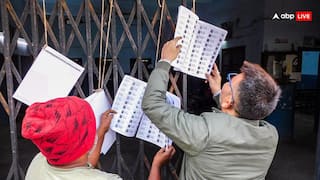UP To Generate 5,255 MW Power From 10 New Thermal Power Plants
Currently, all the thermal power plants in the state generate approximately 6,500 megawatts. Additionally, electricity is produced from various sources, including hydro, wind, and solar energy.

In a bid to make Uttar Pradesh self-reliant in electricity production, the UP government, under the directive of Chief Minister Yogi Adityanath, is set to increase power generation by approximately 5255 MW through 10 new thermal power plants over the next three years.
The UP government is planning to invest over Rs 10 lakh crore amid rising electricity demand in the state, a government statement said.
The Yogi government plans to expand the three existing units in the state to add 5120 MW of additional power production by 2030.
The ten new thermal power stations which are expected to start in the state include 660 MW Obra C Unit-2, which will begin in September this year; 660 MW Jawaharpur Unit-2 to begin in July and 561 MW Ghatampur Unit-1, to begin next month.
Other projects include 660 MW Panki Unit, to begin next month; 561 MW Ghatampur Unit-2, to begin in December; 561 MW Ghatampur Unit-3, to begin next year and 396 MW Khurja STPP Unit-1 and 396 MW Unit-2, to begin by May 2025
With the start of all these power stations, an additional 5255 MW of electricity will be produced in the state.
The Yogi government aims to boost the state's power generation capacity by 5120 MW by 2030. This will involve expanding the capacity of three existing units: Obra D-2 will be increased to 1600 MW, Anpara E-2 to 1600 MW, and Meja 2 to 1920 MW.
Currently, all the thermal power plants in the state generate approximately 6,500 megawatts of electricity. Additionally, electricity is produced from various sources, including hydro, wind, and solar energy.
However, there is a significant gap between power consumption and production in the state due to the neglect of power generation in past decades. This summer, the state's electricity demand exceeded 30,000 megawatts.
The surplus demand was met through purchasing from other states and the private sector to meet the commitment of providing 24-hour electricity.






































